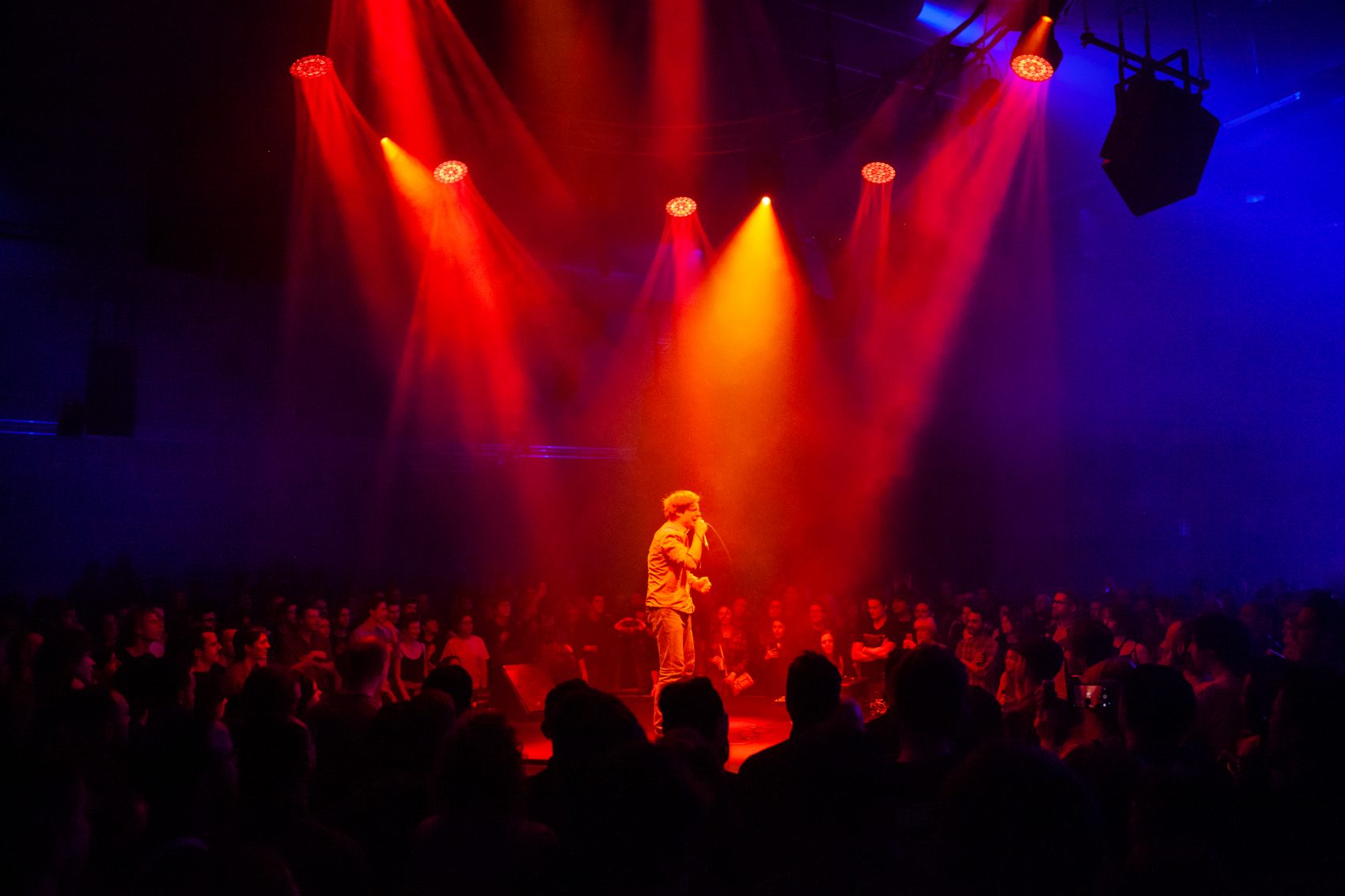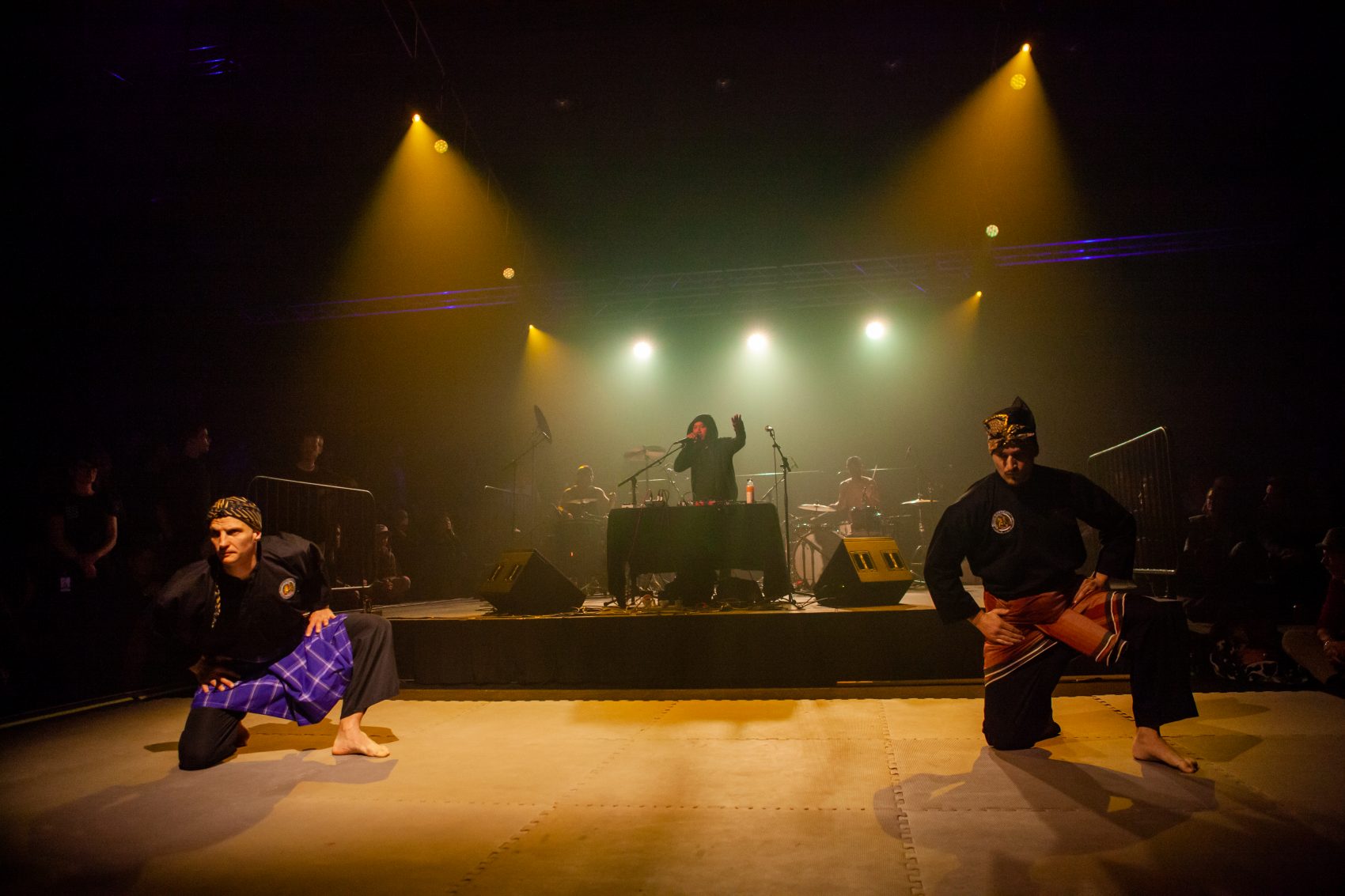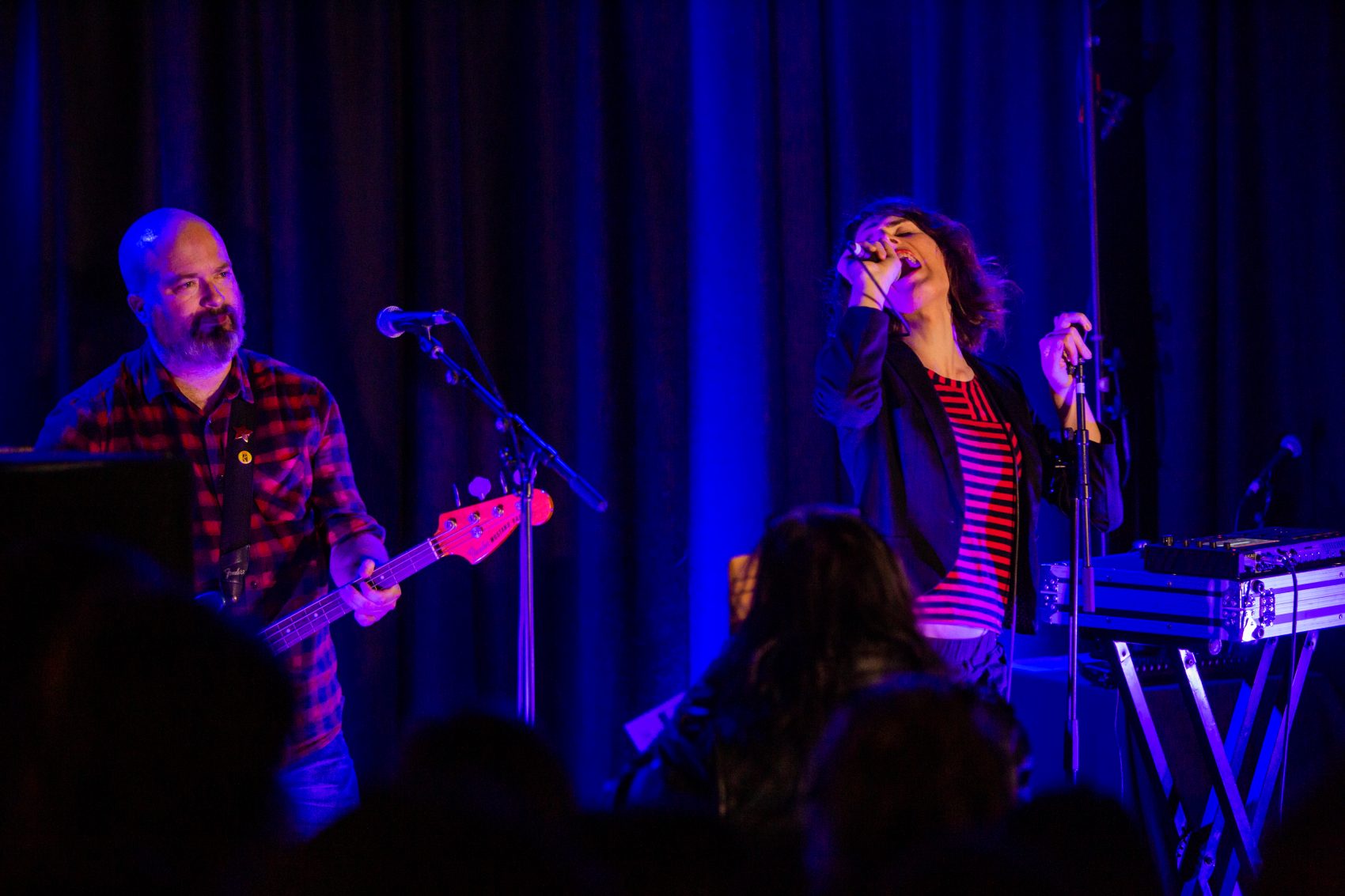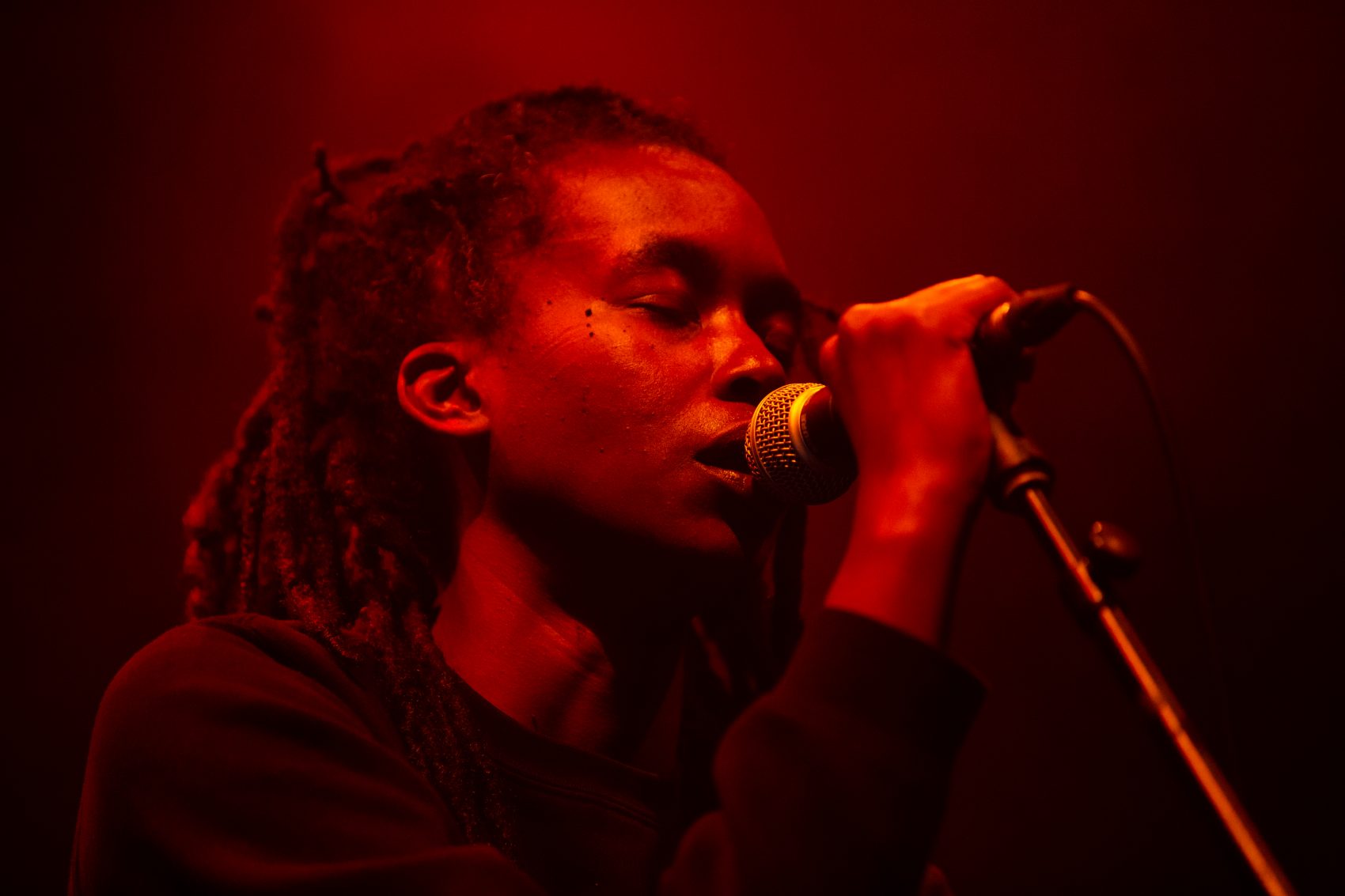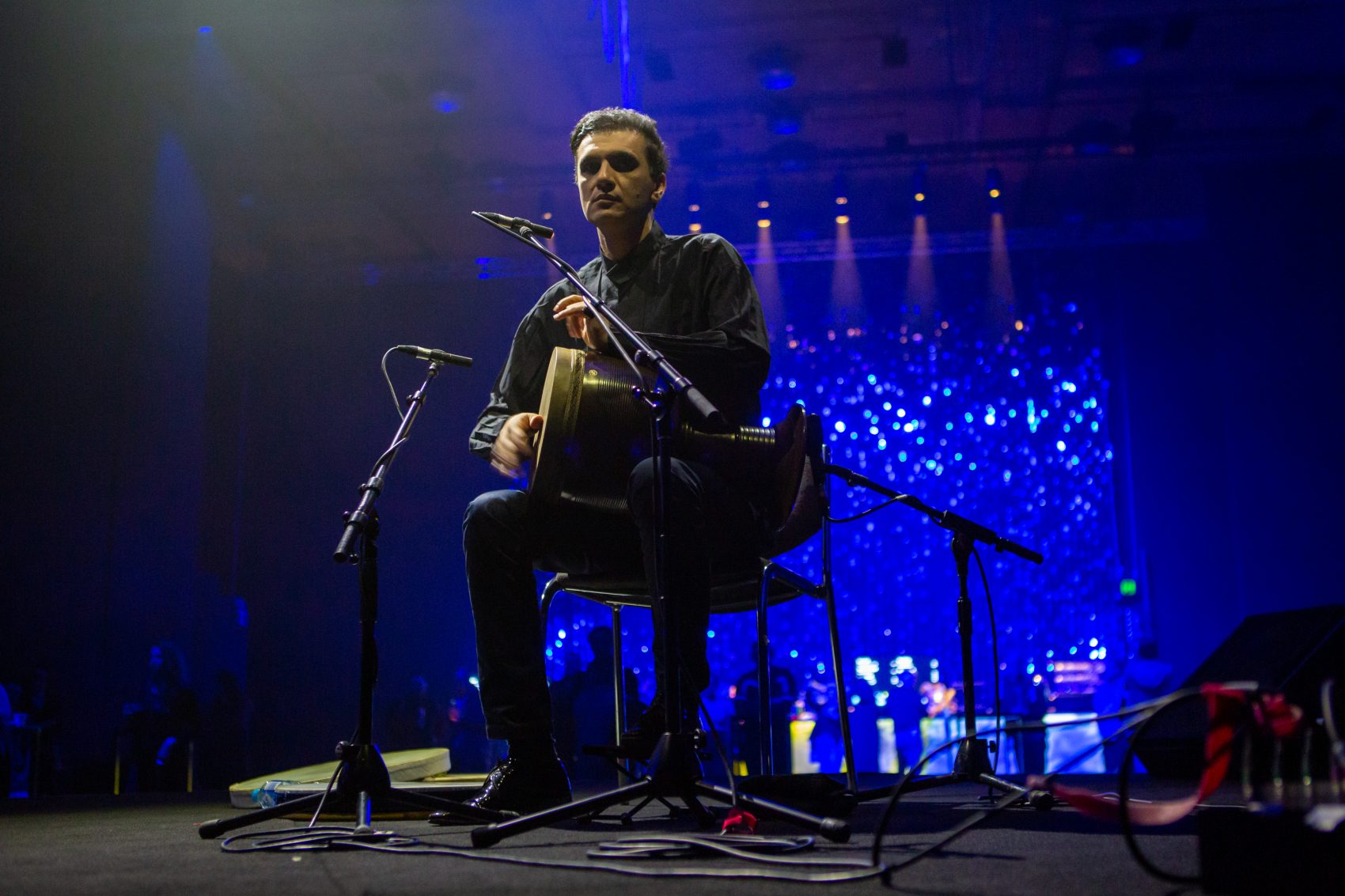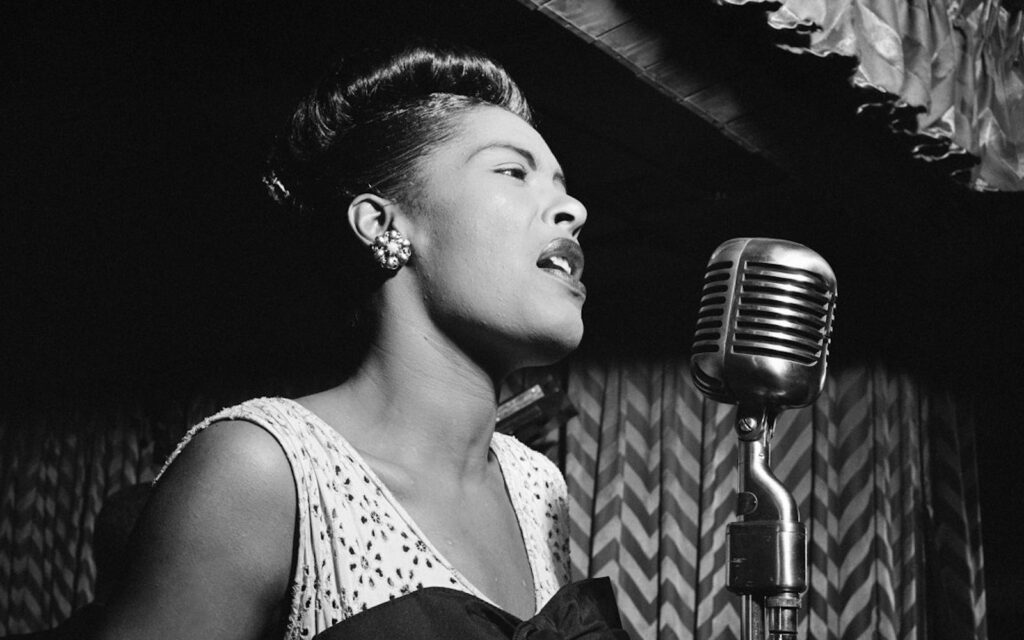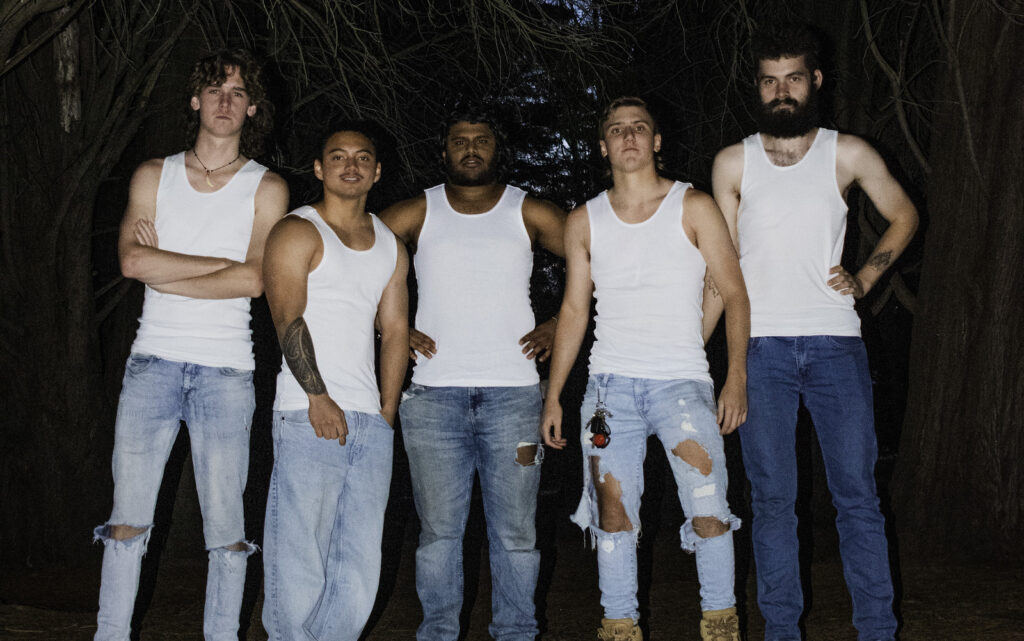Photos by Mark Gambino
On Friday evening, the MAXIMAL program took punters to another planet.
Following a series of signposted arrows through the underground maze of Arts Centre Melbourne’s Supersense Festival of the Ecstatic, it is difficult not to feel a little like Alice descending down the rabbit hole. What lies in wait deep beneath St Kilda Road isn’t far from a fantasy world, either.
“What is happening?” asks Philadelphian poet Moor Mother atop a backdrop of throbbing synth. She repeats the question until you find yourself wondering the same thing.
“Why the fuck are you so far away? Come closer,” she demands and the crowd obliges, shuffling forwards. She takes the hands of members of the front row as she makes her way around the small, circular platform, weaving spoken-word pieces about racial lynching and misogyny as she stares deeply into every pair of onlooking eyes.
Back up countless flights of stairs, The Native Cats seem worlds away from the hazy basement. Their electro brand of post-punk is lighter and, unlike the sensory cacophony a few floors below, the stage setup is a no-frills affair. It’s just good old fashioned fun, especially when Chloe Alison Escott breaks out the melodica.
Venturing down the stairs again, this time to stage two, reveals New Zealand duo Purple Pilgrims beneath a canopy of hanging light bulbs – though they offer little in the ways of illumination.
Plucks of bass intertwined with swelling synth and ethereal harmonies drift between an ‘80s prom vibe and an otherworldly nymphean forest party. When the change of lighting paints the curtain behind the pair red, one can only wonder if we’ve all been sucked into a Twin Peaks fever dream.
In a jarring change of pace, stage one brings Indonesian collective Setabuhan to the helm. By now, the room has been transformed into an arena suggestive of a Bizarro World Fight Club.
A battle between the contemporary and the traditional ensues as a trio comprising two drummers and a vocalist/electro beatsmith spur on a choreographed battle between two machete-wielding fighters.
The crashing drums produce an ear-splitting rhythm as the fighters move with fluid purpose. The power builds until it fills the room, but it never explodes – rather dissipating in a moment of quiet relief.
“What is happening?” indeed.
Within moments, the arena is disassembled, as if none of what had just been witnessed ever happened. From one form of surrealism to another, John Maus is now the focal point of the surrounding audience.
Beating his temples with his fist and threatening to tear the clothes from his body, Maus screams, leaps and dances with unnerving intensity. Aided by nothing but a laptop and a microphone, he is transcendent.
After a barrage of crowd favourites – ‘The Combine’, ‘Rights For Gays’ and ‘Cop Killer’ among them – Maus jumps down from the stage and sprints across the room and out of sight.
With almost 15 minutes left of his set, the crowd await his return. The minutes tick by and the audience are now surveying the room, looking for any sign of Maus. Even the sound engineers look confused. Eventually, an Arts Centre staff member climbs onstage and announces, in not so many words, that Maus isn’t coming back and we’re left to climb out onto the street and return to reality.
What just happened?
Highlight: The truly perfect lineup.
Lowlight: To nitpick, it got very steamy in the basement level.
Crowd favourite: John Maus.


